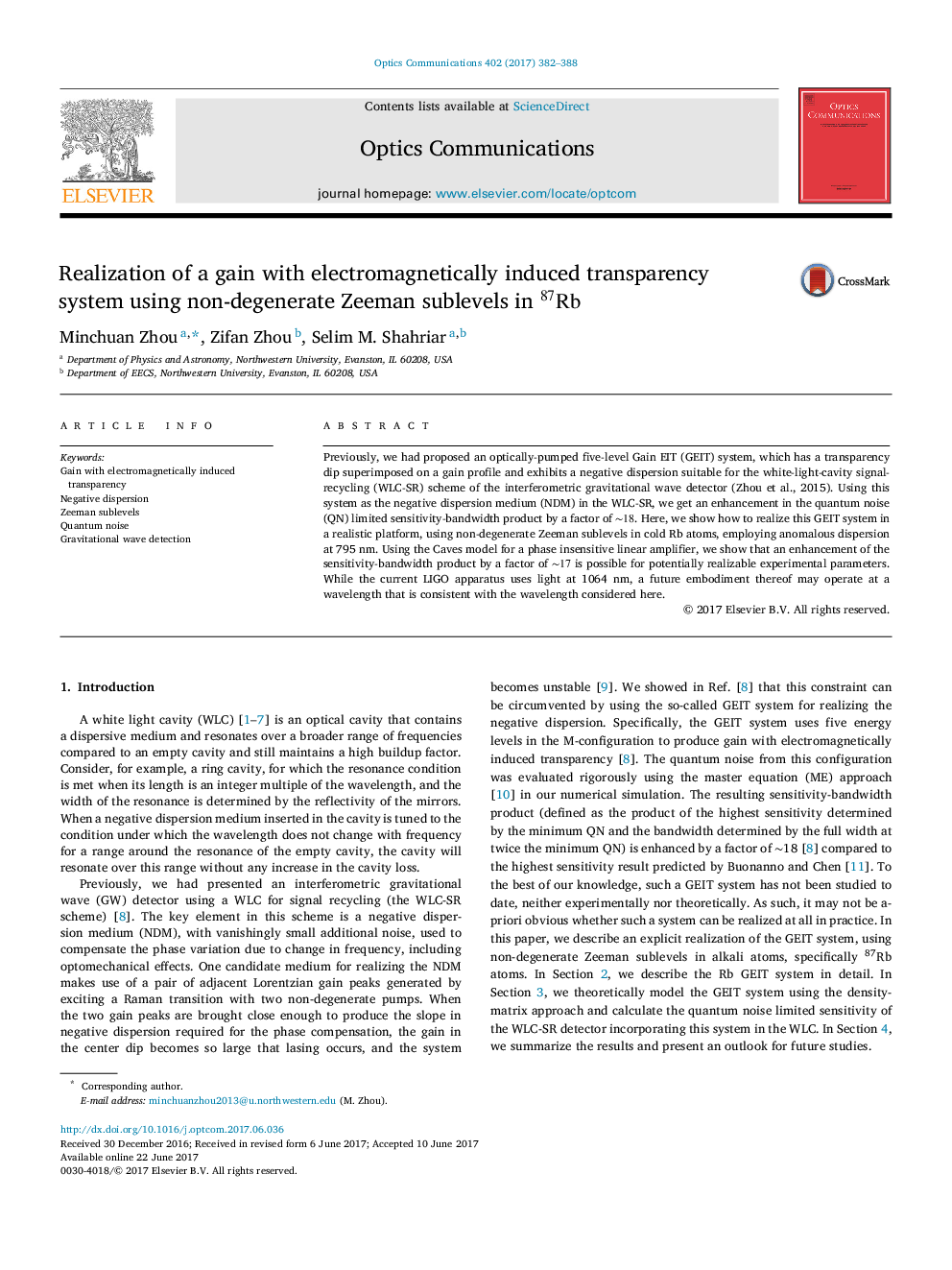| Article ID | Journal | Published Year | Pages | File Type |
|---|---|---|---|---|
| 5449093 | Optics Communications | 2017 | 7 Pages |
â¢We show how to realize a gain EIT system using Zeeman sublevels in cold Rb atoms.â¢It can be used to realize a white light cavity for a gravitational wave detector.â¢It can increase the sensitivity-bandwidth product of a GW detector by a factor of â¼17.â¢It will increase the volume of the GW detectable universe by a factor of â¼5000.
Previously, we had proposed an optically-pumped five-level Gain EIT (GEIT) system, which has a transparency dip superimposed on a gain profile and exhibits a negative dispersion suitable for the white-light-cavity signal-recycling (WLC-SR) scheme of the interferometric gravitational wave detector (Zhou et al., 2015). Using this system as the negative dispersion medium (NDM) in the WLC-SR, we get an enhancement in the quantum noise (QN) limited sensitivity-bandwidth product by a factor of â¼18. Here, we show how to realize this GEIT system in a realistic platform, using non-degenerate Zeeman sublevels in cold Rb atoms, employing anomalous dispersion at 795Â nm. Using the Caves model for a phase insensitive linear amplifier, we show that an enhancement of the sensitivity-bandwidth product by a factor of â¼17 is possible for potentially realizable experimental parameters. While the current LIGO apparatus uses light at 1064Â nm, a future embodiment thereof may operate at a wavelength that is consistent with the wavelength considered here.
